Key takeaways
 The building sector is the 3rd most carbon intensive industry in Canada, accounting for 13% of all emissions in 2022, or 92 million tonnes (MT) of CO2e. Canada aims to cut that amount to 53MT by 2030.
The building sector is the 3rd most carbon intensive industry in Canada, accounting for 13% of all emissions in 2022, or 92 million tonnes (MT) of CO2e. Canada aims to cut that amount to 53MT by 2030. Widespread adoption of wood, specifically mass timber, as a substitute or complement to concrete and steel could cut embodied emissions in buildings by as much as 25%.
Widespread adoption of wood, specifically mass timber, as a substitute or complement to concrete and steel could cut embodied emissions in buildings by as much as 25%. Mass timber deployment in new apartments, condos, and office towers could cut emissions by at least 9MT, or nearly 10% of the sector’s emissions, by 2030.
Mass timber deployment in new apartments, condos, and office towers could cut emissions by at least 9MT, or nearly 10% of the sector’s emissions, by 2030. Aside from emissions savings, greater use of mass timber in building construction could conservatively grow the mass timber market by $1 billion by 2030. A share of this growth is anticipated to flow to Indigenous communities as they are in the employment catchment areas for logging sites, sawmills and mass timber manufacturing facilities.
Aside from emissions savings, greater use of mass timber in building construction could conservatively grow the mass timber market by $1 billion by 2030. A share of this growth is anticipated to flow to Indigenous communities as they are in the employment catchment areas for logging sites, sawmills and mass timber manufacturing facilities. Addressing the cost of construction and occupancy insurance, and mismatch between supply and demand is essential before Canada can achieve emissions savings, economic, and job growth opportunities.
Addressing the cost of construction and occupancy insurance, and mismatch between supply and demand is essential before Canada can achieve emissions savings, economic, and job growth opportunities. Canada has all the puzzle pieces required to become a global leader in mass timber. The country’s climate commitments are an opportune time for all players in the building sector to come together to act on this collective ambition.
Canada has all the puzzle pieces required to become a global leader in mass timber. The country’s climate commitments are an opportune time for all players in the building sector to come together to act on this collective ambition.
British Columbia And Quebec Spearheading Canada’s Timber Drive
Completed mass timber projects, 2022
Source: Natural Resources Canada’s Mass Timber database, RBC Climate Action Institute
661
The number of completed mass timber projects in Canada
87%
B.C., Ontario & Quebec’s share of Canada’s mass timber projects
12
The number of storeys permitted for mass timber projects in Canada
A 10-storey building rising near Toronto’s Harbourfront may not stand out among the crush of the city’s skyscrapers, but as an environmental statement it stands tall. George Brown College’s Limberlost Place is a mass-timber-and-glass structure with ambitions of being a net-zero carbon emissions building.
It’s an idea whose time has come.
While towering steel-and-concrete structures once symbolized economic growth, they are now emblematic of the climate challenge that needs to be scaled. The extensive use of carbon-intensive cement, steel and aluminum in buildings has made it the third most emissions generating sector in Canada, accounting for 92 MT of CO2e1, or 13% of all emissions in 2022. Rising populations, continued urbanization and a rush to develop multi-storey concrete buildings to address a housing supply crisis could make it harder to rein in emissions.
Canada can tap into its rich forestry resources to create a global market for large beams, panels and posts made of treated wood, that can potentially replace concrete and steel or dramatically cut their use—and their associated emissions. The rise of Limberlost Place, and the smattering of similar structures dotting Canada, suggests we may be on the cusp of the next wave of sustainable buildings: made with low-carbon mass timber and assembled like an Ikea wardrobe to help bring down emissions.
What is mass timber?
Mass timber products are solid, structural load-bearing building components such as columns, beams, and panels . They have similar fire and seismic performance as concrete and steel but are significantly lighter in weight. Mass timber can be a substitute for steel and concrete in low and mid-rise buildings. For taller buildings mass timber is typically used in conjunction with concrete and steel, where concrete is used for a building’s stairwell and elevator core and steel is used for columns.
Rise of mass timber
The emergence of mass timber in Canada as a complement and alternative to concrete and steel first emerged in 2007, with the completion of several commercial and institutional buildings in British Columbia, Ontario and Quebec2. These include the College of the Rockies Kootenay Centre South in Cranbrook, B.C., the Winnipeg Humane Society in Manitoba, and the OslerBrook Golf Clubhouse in Collingwood, Ontario. Prior to this point in time, national and provincial building codes did not permit the use of mass timber. Canada now boasts 661 completed mass timber projects. The United States, in comparison, has about 356 completed projects.
Governments or colleges/universities commissioned most of the early commercial and institutional buildings. And while they still dominate the building type mix, there’s a notable shift to multi-storey residential buildings, driven by private developers and builders. Today, a third of all planned and under construction mass timber projects are residential multi-storey projects.
Insight
Wood first:
B.C.’s Mass Timber Playbook
Several enabling policies has made British Columbia a leader in the use and production of mass timber within Canada and internationally.
The long-time champion of its forestry sector and its products, B.C. introduced The Wood First Act in 2009, with the mandate to use wood in provincially funded buildings. The “wood first” procurement approach for public projects continued with successive governments and culminated with the establishment of the Office of Mass Timber Implementation in 2020. A Mass Timber Demonstration Program was announced in 2020 to support early adopters of mass timber, such as Adera Development, to accelerate wider adoption of this low-carbon building material. The province remains quick footed in addressing regulatory barriers, specifically building code requirements. British Columbia was the first province to permit six-storey wood frame residential buildings. When the National Building Code of Canada (NBC) was revised, in 2020, to permit 12-storey mass timber buildings, the province followed suit, even though the NBC was not finalized.
The province leveraged its abundant forestry resources to mirror the playbook used by many European countries to promote mass timber. Countries with sizeable forestry sectors, such as Austria, Germany, Sweden and Finland were some of the first European countries to remove building code restrictions on wood—the most significant obstacle to mass timber use and adoption. Recognizing that government support is often needed to commercialize and scale widespread adoption of new products, these governments also provided project development, and research and development grants for builders and developers to build with mass timber.
The 9 MT emissions imperative
12-25%
Drop in buildings emissions if developers swap concrete & steel with mass timber
6%
Concrete, steel and aluminum’s contribution to Canada’s emissions
9%
Decline in building sector emissions due to widespread use of mass timber
Concrete and steel’s emissions profile is 6 and 5 times greater than wood, respectively3. Within the context of buildings and embodied emissions, concrete, steel, and aluminum account for 6% of Canada’s total emissions or 41 MT of greenhouse gas emissions, in 20224.
In multi-storey buildings, the floor system is the largest total surface area within a building and accounts for 50% of a building’s embodied emissions,5 which reside in the materials that are considered especially challenging to decarbonize. Given the emissions profile of a building’s floor system, much of current decarbonization efforts have focused on this structural building element.
Multi-storey buildings constructed with a mass timber floor system can reduce their average emissions by 27% for the floor system and 12% to 25% for the entire building structure6, according to builders with extensive experience working with mass timber.
Embodied emissions profile of a mid-rise tower
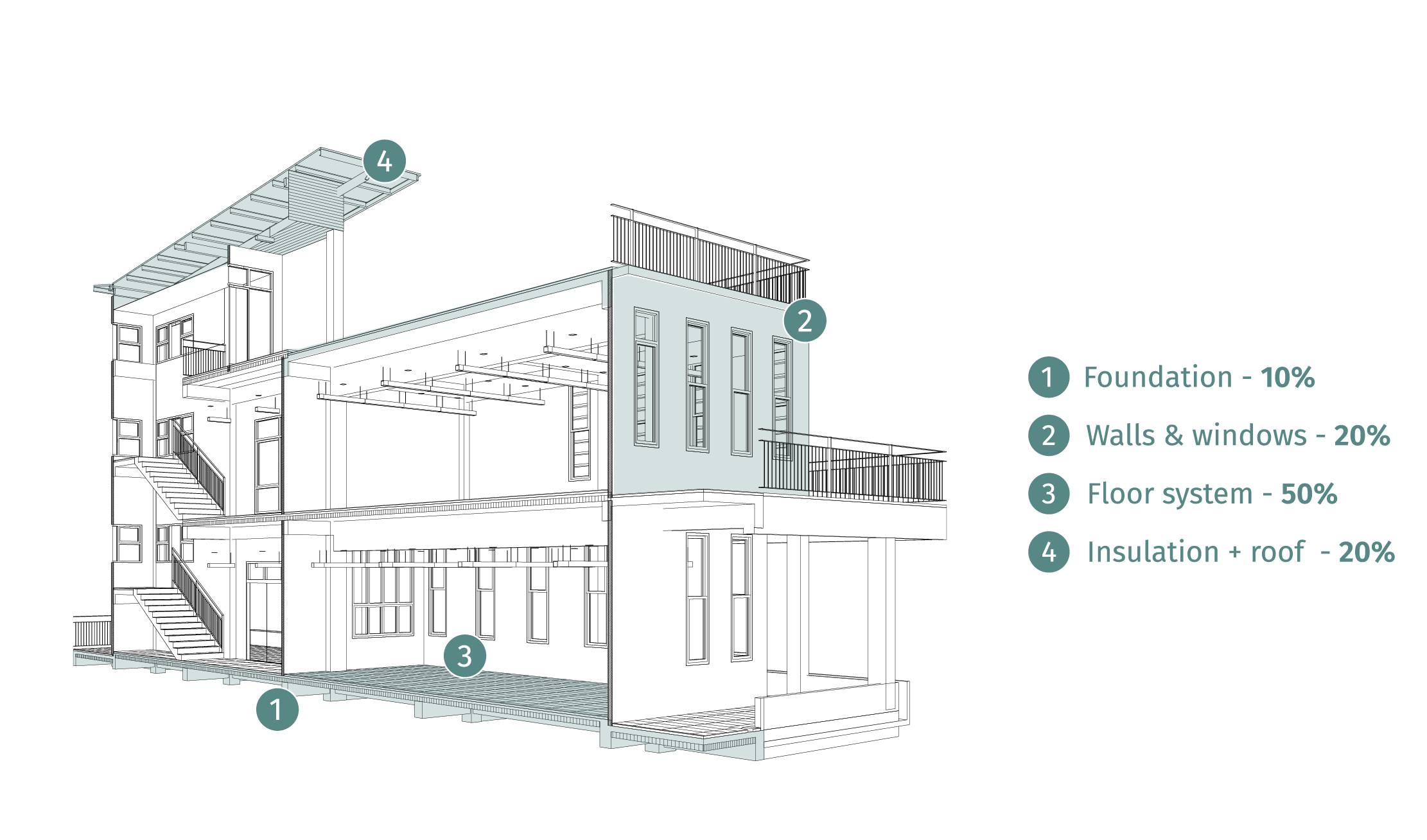
The sector could cut 5.5 MT in emissions by 20307 if one-third of all new apartments and condos and all new office towers, in major urban centres, were constructed using mass timber. Emissions could decline by another 3 MT if all future apartments and condos were constructed using a mass timber floor system and domestic manufacturing capacity was not a constraining factor8. These emission savings demonstrate that small efforts, such as changing one element of a building’s structure, can lead to significant emissions savings, even though the size of the gains may pale in comparison to other purely technology-based solutions, such as heat pumps or electric vehicles⁹.
Construction with mass timber could also lower on-site vehicular traffic and reduce the use of fossil-fuel powered heavy equipment. Unlike concrete, mass timber is a prefabricated wood product that can be delivered in a few shipments and then stored on a construction site.
Mass timber practitioners, Veronica Madonna of Athabasca University and founder of architect firm Studio VMA, and Lee Scott of Element5, a mass timber manufacturer with plants in Quebec and Ontario, have found that this storage benefit can reduce on-site vehicular delivery traffic by 80 to 90%, compared to the construction site for a traditional concrete and steel building.
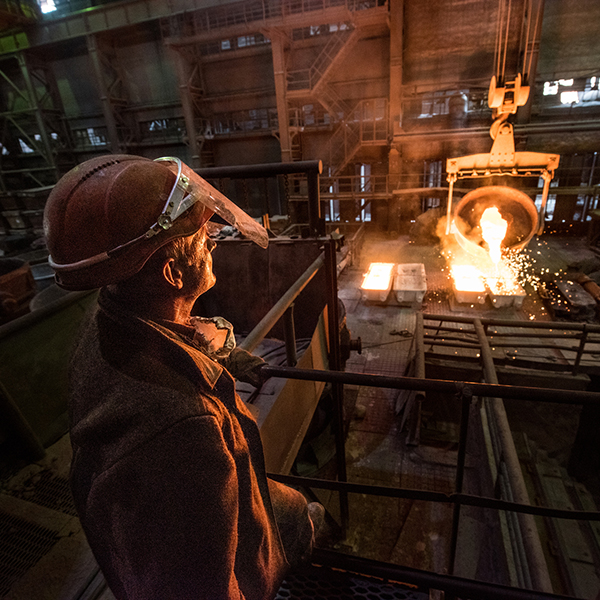
Insight
The story of embodied emissions in steel and concrete
Mass timber, steel, and concrete all have their origins as natural materials extracted from or below the earth’s surface.
The energy and industrial processes required to transform iron ore into steel and limestone and clay into cement, and eventually concrete, are the reasons for their high embodied emissions profile, compared to mass timber. The industrial processes for steel and concrete require using extraordinarily high heat, between 1,400 to 1,600 degrees Celsius, to transform raw materials in blast furnaces or kilns. Energy required to power blast furnaces for steel-making accounts for 87% of emissions generated in the steel making process, according to the International Energy Agency. For cement production, the reverse is true, with 65% of emissions attributable to industrial processes, specifically, the release of greenhouse gases from the heating of limestone and clay in kiln ovens. Mass timber’s significantly lower emissions profile can be attributed to a manufacturing process that largely leaves the original raw materials intact.
Another advantage is that mass timber weighs about 30% less than concrete. The downstream benefit of lower on-site delivery traffic and higher weight differential is lower transportation related emissions. The prefabricated nature of mass timber combined with its relative lightness compared to steel and concrete, means that less heavy machinery such as cranes are needed on a construction site. And when they are used, they have a shorter running time. Both practices reduce the fossil fuel used to operate construction machinery, lowering emission levels.
Canada’s opportunity to capture a slice of the global mass timber market
3x
Growth in Canadian jobs associated with mass timber by 2030
3x
Growth in Canadian GDP from mass timber by 2030
$4.9B
Global mass timber market by 2030
Mass timber accounted for 1% of all building construction materials in North America last year. The global mass timber market reached $1.6 billion in 2022 and is forecast to rise to $1.9 billion this year10. Analysts estimate the market could reach $4.9 billion by 2030 if global demand continues to grow at an annual rate of 14.5%.
Canada’s share of the global mass timber market is $379 million in 2023. And it’s growing, with an additional $649 million expected to be added to the country’s economic output from the production of mass timber, under a scenario where there’s no new manufacturing capacity by 2030. Increased production capacity and efforts by Canada to capture 25% of the global mass timber market could see economic output surpass $1.2 billion by 2030.
If the construction material mix moves away from carbon-intensive concrete and steel and mass timber industry takes off, it could account for a larger share of the estimated $2.6 trillion global building materials market by 2030.
While there are no official employment data for the mass timber sector, we estimate that the sector employs, directly and indirectly, about 4,000 Canadians in 202311. The sector’s job growth is anticipated to triple by 2030, to a high of 12,150 jobs across manufacturing, technology, forestry, design and engineering, if future demand materializes.
Some of these jobs are anticipated to flow to Indigenous peoples as the employment catchment areas of logging sites, sawmills and mass timber manufacturing facilities often encompass their communities.
Canada’s Forestry Resources Could Boost Its Low-Carbon Economy
Two scenarios for Canada’s promising mass timber economy
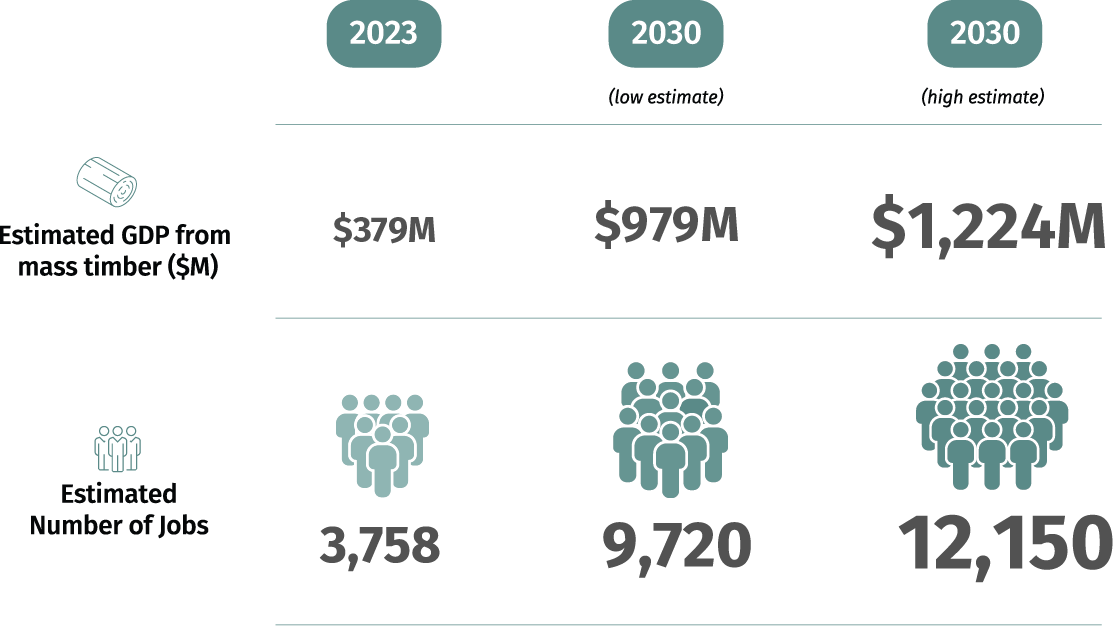
RBC Climate Action Institute derived analysis using data in Polaris Market Research’s Cross Laminated Timber Market report, Natural Resources Canada Mass Timber data base, and Statistics Canada sectoral GDP data.
Barriers to Canada’s mass timber and climate ambitions
The steady increase in the number of mass timber projects underway in Canada is a testament to the building sector’s green ambitions. Industry interviews suggest a strong desire to increase the use of mass timber, but fundamental challenges are preventing market participants from raising their ambitions at a pace necessary to reach Canada’s climate goals.
Mass Timber’s Big Opportunity To Grab Greater Market Share
Breakdown of building construction materials use in North America
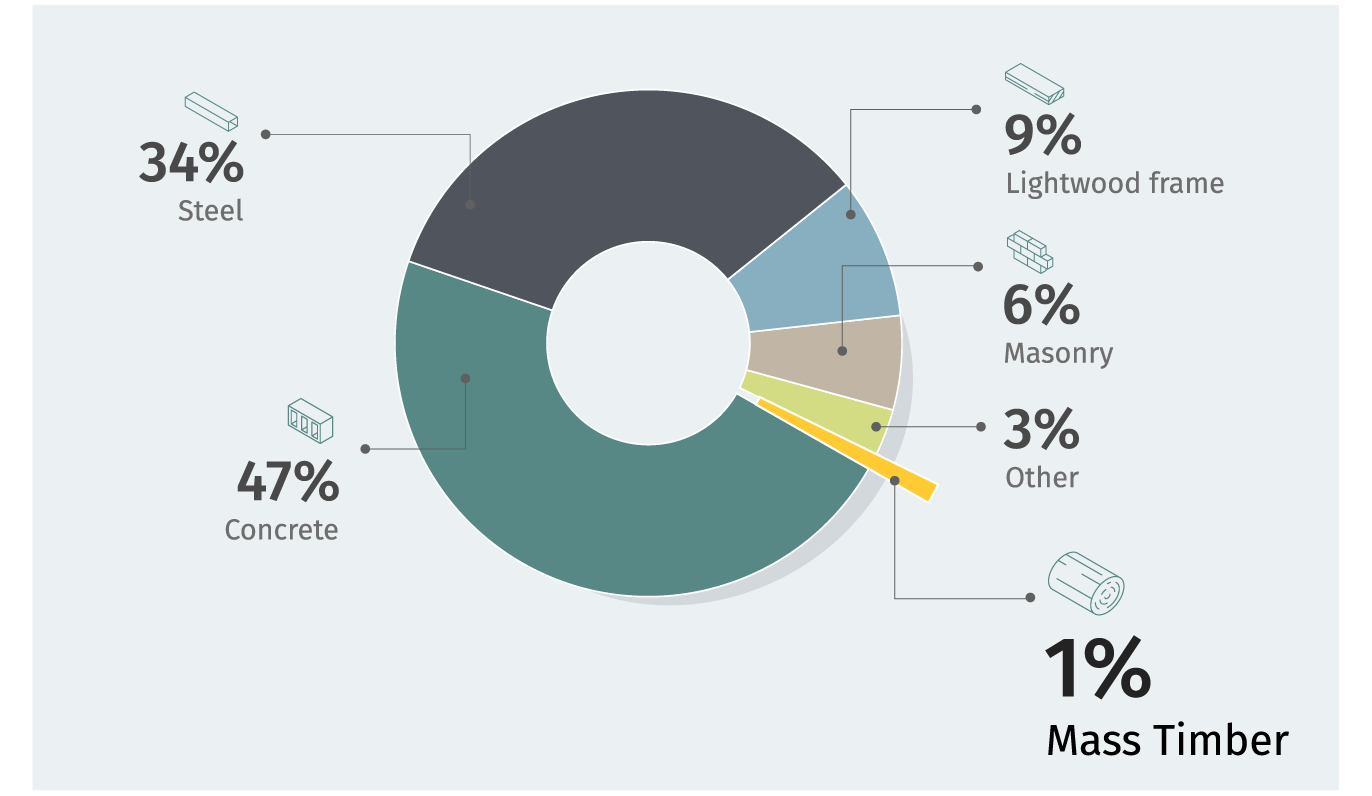
Source: RBC Climate Action Institute, Mantle Developments, 2022
Insurance underwriting has emerged as the most difficult challenge for both building construction and occupancy insurance. Presently, each building requires a bespoke policy, which significantly adds to a project’s final cost,12 and is ultimately passed down to the end buyer. Construction insurance premiums for a mass timber building can be up to 10 times the costs of a similar building constructed with steel and concrete. This layer of cost erodes the competitiveness of buildings featuring mass timber and hampers its widespread use in residential, commercial, and institutional buildings13.
A second structural issue is a mismatch between the location of mass timber production and demand for the material.
Patrick Chouinard, the founder of Element5, noted that B.C.’s early mover status resulted in a manufacturing base that is concentrated in western Canada, but current and emerging demand largely coming from eastern Canada and central and northeastern United States. Patrick Crabbe, Director of Mass Timber at Bird Construction, an early adopter and proponent of mass timber, estimates that 62% of capacity and 22% of demand is concentrated in western Canada, but 78% of demand and 38% of capacity is concentrated in eastern Canada14.
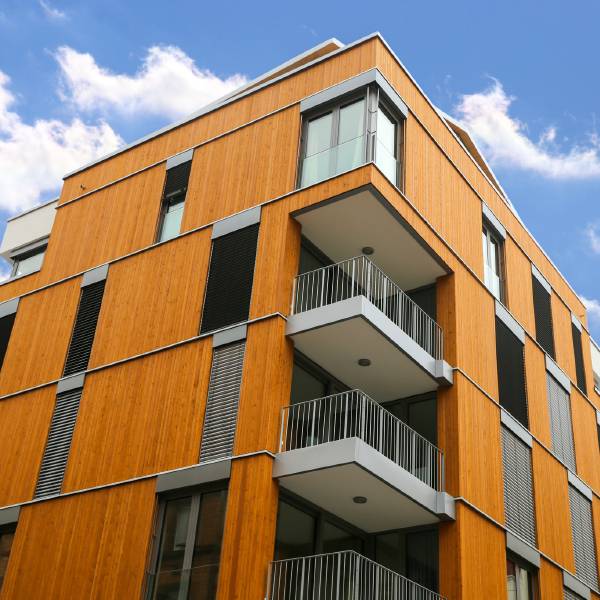
Insight
Sky-high premiums for mass timber buildings
Lack of data to assess the fire risk of mass timber buildings is primarily why building construction and occupancy insurances for mass timber buildings is 6 to 10 times higher than conventional steel and concrete buildings.
Exacerbating this situation is the small and niche market for mass timber. The lack of actuarial data has meant that insurance companies typically insure mass timber buildings to the closest approximate building structure archetype—a wooden frame house constructed with 2×4 lumber. Recognizing that wider adoption of mass timber is necessary to decarbonize the sector, construction services firm Ellis Don has made attempts to bridge the knowledge and information gap that exists in the insurance industry, by bringing industry players together to discuss the insurance challenge and explore potential solutions. These actions have yet to yield the desired outcome, either in Canada or internationally, and continue to present a significant obstacle to scaling the use of mass timber.
For manufacturers, one of the biggest impediments to scaling their operations is the cost of acquiring specialized mass timber machinery and technology, which is produced by only a handful of European based manufacturers. High cost of manufacturing equipment is also preventing new players from entering the mass timber business. The capital required to set up a manufacturing facility, with 50,000 m2 capacity, is estimated to cost $200 million, with the bulk of the costs attributable to machinery.
Canada’s sawmills are dominated by players who produce “dimension lumber”, which are the 2×4/6/8 lumber found at big box home improvement stores and used to build the structural frame of single detached homes. Mass timber products are manufactured using dimension lumber but the moisture content and milling requirements of the lumber are materially different. These differences have created a shortage of appropriate mass timber “feedstock”, leading to a mass timber supply storage.
Craig Applegath, a partner and architect at DIALOG, and early adopter of mass timber, estimates that there’s a two-year waitlist for mass timber in Canada15. Some mass timber manufacturers have addressed this third structural issue through backwards integration, by purchasing sawmills to control the type of wood that is sourced and how it is processed into feedstock.
Bird Construction’s Crabbe applauds the leadership role that various governments have taken to spur interest in and use of mass timber. He notes that the success of their efforts has unintentionally led to the supply and demand imbalance. If not resolved, this market imbalance could slow the pace of mass timber adoption and the building sector’s decarbonization goals.
Recommendations
Canada may be late to the mass timber market, but it has caught up with its European competitors in less than a decade, both in the use and manufacturing of mass timber. It didn’t happen by chance either. Tailored federal and provincial policies and programs that were attuned to evolving market and regulatory forces, combined with visionary entrepreneurs along the building value chain drove Canada’s early successes.
But we are just getting started. Canada has an opportunity to play a leading role in the global mass timber movement if it adopts the following recommendations:
Standardize insurance underwriting to lower costs. Standardizing insurance fire risks for mass timber buildings, during building construction and occupancy, will lower insurance premiums and overall costs for builders and building owners.
Continue funding capital expenditure grants. Federal and provincial grants have played a pivotal role in lowering machinery costs and enabling additional manufacturing capacity, either from existing manufacturers or new entrants. Continuing these programs would ensure supply can keep pace with double digit growth in domestic and international demand.
Conclusion
In the course of conducting research for this report we repeatedly heard from builders, architects, engineers, and manufacturers that Canada can and should be a global leader in mass timber research, manufacturing, and use, while spearheading efforts to decarbonize the building sector. While there are fundamental challenges that must be addressed before these ambitions can be realized, there’s industry consensus that these challenges are not insurmountable. Now is the time for all players in the building sector to work together to act on these challenges and solutions. And for Canada to showcase to the world that we are a nation of innovators in building construction and climate action.
Related Reading
For more, go to www.rbc.com/climate-action-institute.
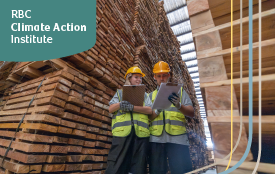
Download the Report
Contributors:
Lead author: Myha Truong-Regan, Head of Climate Research, RBC Climate Action Institute
Farhad Panahov, Economist
Yadullah Hussain, Managing Editor, RBC Climate Action Institute
Darren Chow, Director, Content Strategy & Creative Production
Shiplu Talukder, Digital Publishing Specialist
Caprice Biasoni, Graphic Design Specialist
- Patrick Chouinard, Founder, Element5
Patrick Crabbe, Director of Mass Timber, Bird Construction
Mark Gaglione, Co-lead, EllisDon Building and Material Sciences Department
Vince Davenport, Co-lead, EllisDon Building and Material Sciences Department
- Estimates from the Canadian Climate Institute Early Emissions Estimates, 2023.
- Some architecture historians would argue that mass timber is not a new building material to Canada. Mass (or heavy) timber had been used in Canada since the late 1800s. The oldest surviving heavy timber building in Canada, which was built in 1895 and is still in use today, is located at 312 Adelaide Street West in Toronto.
- Hsu, S.L. (2010, June). Life cycle assessment of materials and construction in commercial structures: variability and limitations. Massachusetts Institute of Technology.
- RBC Climate Action Institute estimate based on analysis of data from the United Nations Environment Programme: 2022 Global Status Report for Buildings and Construction (section 3.3 Emissions in the Buildings Sector) and the Canadian Climate Institute’s Early Emissions Estimates for 2022.
- Interview with Mark Gaglione and Vince Davenport, co-leaders of Ellis Don’s Building and Material Sciences Department. Craig Applegath of Dialog estimates that for some building forms, a building’s floor system can account for 70% of total building materials used.
- The floor system emissions reduction savings is based on the assumption that the mass timber building is constructed with a concrete and steel foundation. The 12% and 25% total savings is for a mass timber structure versus an equivalent structure constructed using a composite steel and beam method.
- Residential units constructed between 2025 and 2030.
- The current mass timber manufacturing capacity in Canada is estimated at 1.1 million cubic meters, based on data from Natural Resources Canada. In comparison, Architectural Record reports that European capacity is 1.6 million cubic meters.
- The emissions from using a mass timber floor system would be negative, were biogenic carbon taken into consideration. Ellis Don’s Building Materials and Science Department has estimated biogenic carbon savings of negative 170Kg/CO2e/m2.
- RBC Climate Action Institute derived analysis using data in Polaris Market Research’s Cross Laminated Timber Market report, Natural Resources Canada Mass Timber data base, and Statistics Canada sectoral GDP data.
- RBC Climate Action Institute derived analysis using data in B.C’s Mass Timber Action Plan, Polaris Market Research’s Cross Laminated Timber Market report, Natural Resources Canada Mass Timber data base, and Statistics Canada sectoral GDP data.
- Builders of projects that cost more than $50 million to construct typically need to bring in several insurance carriers to provide coverage for their projects. This practice cannot be avoided because insurance carriers have a lower maximum insurable limit for mass timber than other conventional building materials such concrete, steel, and traditional wood.
- Builders with extensive experience in building with mass timber have been able to achieve cost parity with conventional steel and concrete buildings by optimizing design, construction, and scheduling practices.
- Data presented by Patrick Crabbe at the Brookfield Sustainability Institute’s Toronto Mass Timber Conference, September 2023. Data obtained from Forest Economic Advisor Mass Timber North America report, July 2022.
- Estimate made in October 2022 in a Medium article titled: 10 Reasons to Build with Mass Timber.
This article is intended as general information only and is not to be relied upon as constituting legal, financial or other professional advice. A professional advisor should be consulted regarding your specific situation. Information presented is believed to be factual and up-to-date but we do not guarantee its accuracy and it should not be regarded as a complete analysis of the subjects discussed. All expressions of opinion reflect the judgment of the authors as of the date of publication and are subject to change. No endorsement of any third parties or their advice, opinions, information, products or services is expressly given or implied by Royal Bank of Canada or any of its affiliates.



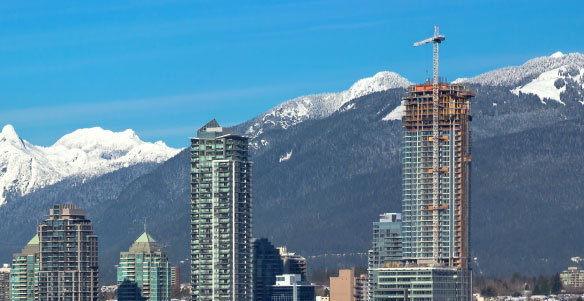
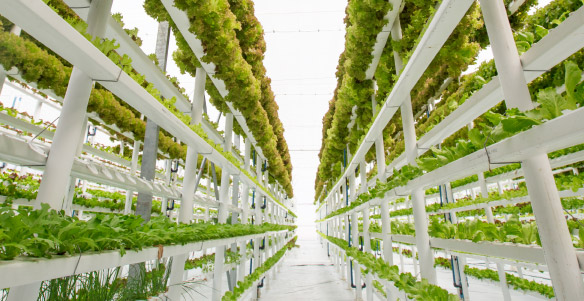
 Learn More
Learn More